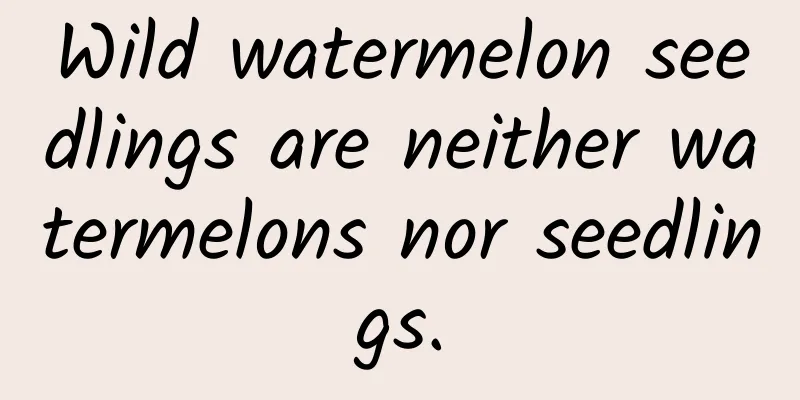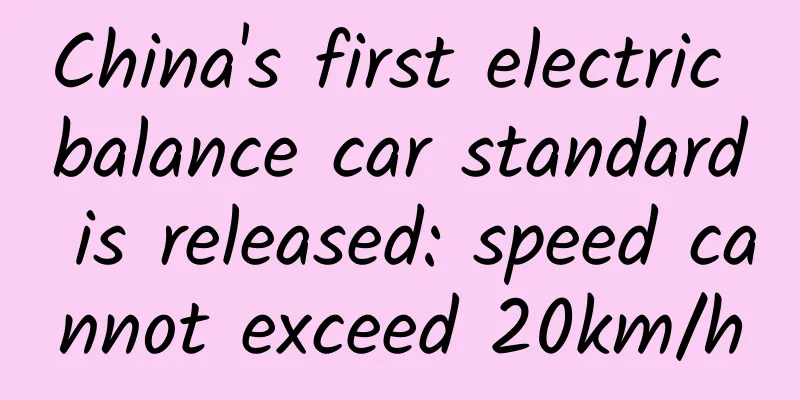Wild watermelon seedlings are neither watermelons nor seedlings.

|
Speaking of wild watermelon seedlings Hibiscus trionum, it seems that I haven't seen this little weed for a long time. Yes, it is a little weed, a kind of weed that once appeared on the ridges of fields, flower beds, roadside vacant lots, and even in the empty flower pots in your childhood garden. Every autumn, in the semi-arid weeds, this little wild flower will occasionally emerge. The petals are white, but a little old yellow. Together with the autumn colors of wormwood and Amaranthus retroflexus, it is synonymous with autumn in childhood. Flowers of wild watermelon seedlings | Nanchuan jackfruit It's not a watermelon, nor a seedling. July is the season when watermelons are on the market in large quantities. When I was a child, I liked to spit out the seeds when eating watermelons. So when the autumn wind blows in August, there will be a lot of watermelon seeds sprouting in the grass in front of and behind the house. When I was a child, I liked to look for watermelon seedlings in the weeds, because in more than a month, these watermelon vines will always produce a small melon egg as big as a tennis ball. Children don't eat them for food, they just play with them. However, when children look for watermelon seedlings, they always find a plant that is very similar to watermelon seedlings. When the children see it, they will take care of it like taking care of watermelon seedlings, remove the weeds around it, and cover it with wormwood stalks. The children expect it to produce melons in a short time, but they find that it blooms white flowers before it grows up, and then produces a small empty shell that looks like a cotton boll but not like a cotton boll, so they are very disappointed. This is the wild watermelon seedling, and its leaves are also deeply pinnate, very similar to watermelons, so it got this nickname. The leaves of wild watermelon seedlings are divided into several large veins from the root | Bogdan / Wikipedia True•The leaves of watermelon seedlings have only one largest vein | Calendar Girl In fact, if you look closely at the leaves of wild watermelon seedlings and watermelons, there are still big differences. The leaves of watermelons are deeply pinnate, but the leaves have a single main vein, or have one or two sets of side veins forming large side lobes. The leaves of wild watermelon seedlings, although they also have deeply pinnate, have many main veins, which gives away the secret. Many people are confused about the difference between single main vein and multiple main veins. In fact, you can carefully observe the structure of the leaf veins. If there is only one thick vein extending from the base of the leaf, it is a single main vein, and if there are several thick veins extending from the base, it is a leaf with multiple main veins. Wild watermelon seedling with cracked fruit | Stefan.lefnaer / Wikimedia Commons The multi-veined leaves and yellow-white flowers of the wild watermelon seedlings reveal its identity. Although the wild watermelon seedlings have the words "wild watermelon", they have nothing to do with watermelons. They are relatives of the hollyhocks on the roadside, the cotton in the fields, and the mallows in the flower beds. They belong to the Malvaceae family. The Malvaceae family has three major characteristics: palm-shaped leaves with multiple main veins, broad and developed sepals, and fused tubular stamen columns. The wild watermelon seedlings have all three qualities. Although the leaves are deeply lobed, the palm veins are obvious; although the flowers are small, there are many large papery sepals and short stamens. In particular, the papery sepals wrap the small fruits after flowering, which are shaped like translucent and upward-raised small bells, so the wild watermelon seedlings are also called "fragrant bell grass". Unfortunately, its "fragrant bells" are produced a little late, and it has spent most of its life under the name of "watermelon seedlings". Wild watermelon seedlings gradually disappearing As mentioned at the beginning, wild watermelon seedlings were once extremely common weeds. Especially the field weeds that were once very rampant. In the dry farmland in the north, because the growth cycle of wild watermelon seedlings is very short, this vicious weed cannot be completely weeded in summer and autumn. Moreover, wild watermelon seedlings especially like to grow in bare wasteland after vegetation has been removed, especially on ridges and roadsides. Since there is no one to pull them out, they can spread seeds to the fields at will. The seeds of wild watermelon seedlings have almost no dormancy period, so waves of seeds fall into the fields. In addition, wild watermelon seedlings are both salt-tolerant and drought-tolerant, so they become one of the strongest weeds in dry fields. Flowers of wild watermelon seedlings | Agnieszka Kwiecień, Nova / Wikimedia Commons The reason why wild watermelon seedlings are so rampant is actually because of humans. Many Malvaceae plants are famous human companion plants because their seeds are light and have hairs and thorns on the edges, which can easily hide in the gaps of clothes and the hair of livestock. The origin of the name of human companion plants is that as long as there are traces of humans, there are traces of such plants. The most famous human companion plant is probably hollyhock. This large Malvaceae plant native to Central Asia gradually spread throughout Asia with the footsteps of humans. Wild watermelon seedlings are similar to hollyhocks, but humans still covet the beauty of hollyhocks, while wild watermelon seedlings are purely accompanying the footsteps of humans. Although domesticated as an ornamental plant, hollyhock is also common as a weed | Pixabay Another obvious characteristic of human-companion plants is that they are particularly diverse and luxuriant in environments deeply influenced by humans. Once humans leave, they will gradually disappear in the wilderness. Because many human-companion plants require humans to constantly disturb the soil to form an open living space, and once human traces disappear, native herbs and shrubs develop, and they will have no place to survive. Therefore, wild watermelon seedlings generally like to grow in fields and roadsides. Once they go deep into the wilderness, they are rarely seen. But in recent years, wild watermelon seedlings have become increasingly rare, and seem to be fading from people's sight. Only in occasional semi-arid and exposed wastelands can some scattered traces be found. The plight of wild watermelon seedlings is actually closely related to humans. In recent years, urban construction has become more and more sophisticated, and large areas of urban ground have been hardened, leaving fewer and fewer places for wild watermelon seedlings to grow. Large areas of arable land are also covered by garden turf, and repeated mowing and weeding prevent them from growing. The farmland around the city is also becoming more and more single-cultivated and refined, and the high-yield corn, along with the use of herbicides, has caused wild watermelon seedlings to gradually withdraw from the ecological stage. Scientific illustration of wild watermelon seedlings | Flickr / Swallowtail Garden Seeds In addition, outside its native Central Asia, it appears as a companion plant. When people "abandon" it, it will naturally disappear from people's sight. Although wild watermelon seedlings are not in danger of extinction, it seems to confirm the old saying: "Success and failure are due to Xiao He." |
<<: Muscovite: thin and hazy thousand-layer paper, mica screen with deep candlelight
>>: Don't wear silver jewelry randomly, the water inside is a bit deep
Recommend
Guangzhou server rental configuration price list?
Guangzhou server rental configuration price list?...
Cold dishes are also "dangerous goods". How should we eat cold dishes healthily in summer?
Author: Xue Qingxin, registered dietitian Reviewe...
IIC: Industrial Internet of Things Artificial Intelligence Framework White Paper
Industrial AI (AI), the application of artificial...
Kotlin continues to power Android development and plans to expand into more areas
On October 3rd this year, KotlinConf 2018, the Ko...
Wolves and moose entered the same isolated island: 69 years later, the wolves were extinct!
Many people may be curious about what would happe...
The Ministry of Foreign Affairs responded to the Australian Prime Minister's statement that he welcomes China's rise (full text)
The Ministry of Foreign Affairs responded to the ...
How much does it cost to promote Xiaohongshu? Xiaohongshu advertising quotation for 5,000 fans
Judging from the fact that so many first- and sec...
Rules and features of Facebook advertising in 2020!
In the social media industry, “speed is everythin...
Three steps of product operation: attracting traffic, retaining users, and being active
A very good single male friend of mine once made ...
Quantum dot vs. OLED: Which screen technology is better?
Although OLED is no longer a new technology, panel...
Amazon and Bezos are in great glory, but they are embarrassed in China
Amazon CEO Bezos has been all over the news on CN...
These "milk tea", "coffee" and "stamps" are all new drugs! Be careful!
The seemingly ordinary "milk tea" and &...
Dismantling Xiaohongshu's official IDEA marketing methodology
Since Xiaohongshu announced the IDEA methodology ...
Scary question: Did you lock the door before going out during the National Day holiday?
The National Day holiday is here, and many people...









